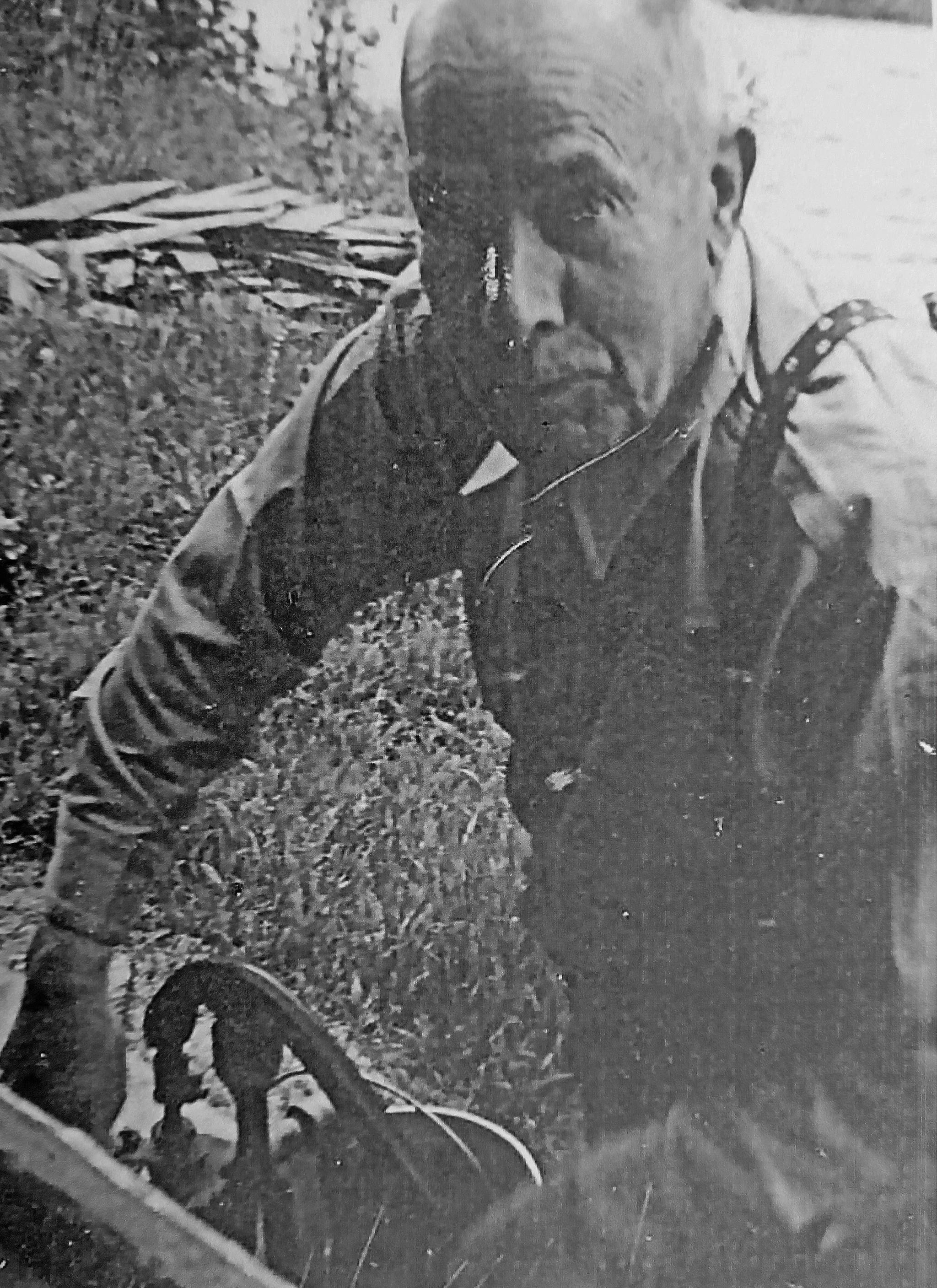AUTHOR’S NOTE: Last time, we explored the story behind the name of Jim’s Landing, on the Kenai River just outside of Cooper Landing, and we met James (“Big Jim”) O’Brien and James (“Little Jim”) Dunmire, two close friends and mining partners who first arrived on the Kenai Peninsula in 1935.
In June 1935, when Big Jim (a silver miner) and Little Jim (a coal miner) first made their way from Idaho, via Seward, to Cooper Landing, they were determined to go placer mining, and they quickly decided to try their luck up on Surprise Creek.
They had heard of the placer work done up there earlier in the century by Stephan Melchior, a German immigrant who had died two years earlier in Seward and whose trail to his Surprise Creek mine began across the Kenai River from a location known locally as Melchior’s Landing. So they ventured up the old miner’s trail and set to work.
They would mine in that drainage for more than 30 years.
But in their early days in the Cooper Landing area, the Jims also needed a place to live. In that, too, they benefited from the past.
In the late 1890s, around the same time that Joseph Cooper — the namesake of Cooper Landing — was organizing the local Lake Mining District, another fortune-seeking gold miner, George Washington Towle, entered the territory. Towle and his sons trekked to Cooper Landing from the gold rush over at Hope and Sunrise, and on Cooper and Stetson creeks they found good prospects and staked several claims.
In about 1910, one of Towle’s boys, Tom, enlisted the help of brothers Frank and Ben to build a cabin for himself just below Schooner Bend. He was still living there in 1922, as a pair of hunters discovered when they hiked there seeking shelter and found a note that said, “This cabin is owned by Tom Towle. You are welcome to use it if you leave it in as good condition as you find it. Put out the fires and shut the doors.”
But by 1935, Tom Towle was gone and the cabin had been abandoned. A man named Mike Glynn was now the owner, and in a verbal agreement he gave the cabin and adjacent land to the two Jims, who promptly moved in. They spent considerable time up on Surprise Creek and split their winters between Schooner Bend and Seward, running a successful trap line and prospering from a robust fur market.
Just before that first winter set in, however, they found themselves with company.
Beverly Christensen and her first husband, Joe Sabrowski, had moved to Cooper Landing in August, were desperately short of funds, were staying in a wall tent, and, by December, were badly in need of a warm place to live. The cabin at Schooner Bend, according to Christensen, was built like a duplex, with a hallway separating two main rooms. The Jims were occupying only one of the rooms; they offered the other to the Sabrowskis.
Generally speaking, things went smoothly after this, until a man named Charlie Hubbard complicated matters.
In July 1935, Hubbard had filed several mining claims, including the ETA gold placer claim that included the old Tom Towle cabin and the property on which it sat. In 1937, Hubbard visited the cabin and told the two Jims to move out.
“He had a big .45 strapped on him,” Little Jim recalled in a 1969 interview. “When we didn’t say nothing (at first), he kept getting tougher and tougher. I just kept on until he said all he was going to say. Then I told him, I said, ‘Now, you all through?’ … I stood up, stood right by him. I was in hopes he’d reach for that gun. I suppose I would have killed the bastard right there if he had of.
“He knew it, too. … I told him what kind of guy I thought he was, and I told him, ‘Mister, you better just stay away from here and never come near here. You ever break into this place, and I’ll put a twist in your neck, and you will be watching your back trail the rest of your life.’ … Oh man, I was mad! I couldn’t hardly keep my hands off him, and he knew it. … You betcha he never come near us again.”
From that point on, it was generally acknowledged that the old Towle place was the Jims’ home, as long as they continued to live there.
Still, Hubbard did eventually get a measure of revenge. In October 1956, he sold his claims, including the ETA, to a man named C.W. Mitchell, who waited until 1969 to make his move. Big Jim had died and Little Jim had moved into town, so he was able to prevent the Jims’ friends, Harold and Bernice Davis, from occupying the home or harvesting from the Jims’ fertile garden plot, despite the fact that the Davises had been sharing the place with the Jims for years.
But back in the 1930s, the Jims returned to work. And they worked hard, making their mark on Cooper Landing in the process.
AUTHOR’S NOTE: Next time, we will examine the extent of the efforts Big Jim and Little Jim put into their Surprise Creek operation, including some troubles with the feds.
• By Clark Fair, For the Peninsula Clarion

